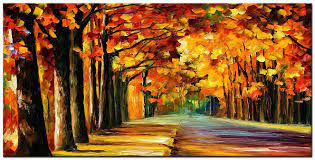Painting is one of the most ancient and expressive forms of art, with a rich history that spans thousands of years. From the cave schilderij of Lascaux to the digital art of today, painting has evolved dramatically while remaining a fundamental way for humans to express ideas, emotions, and perspectives.
The Origins and Evolution of Painting
The earliest known paintings are found in the Chauvet Cave in France, dated to around 30,000 BCE. These early artworks, created using natural pigments and rudimentary tools, depict animals and abstract symbols, providing insight into the lives and beliefs of prehistoric peoples. As civilizations progressed, so did the techniques and purposes of painting.
In ancient Egypt, painting was used extensively in funerary art and decoration, with a focus on idealized representations and symbolic meanings. The Greeks and Romans introduced more naturalistic approaches, experimenting with perspective and proportion, setting the stage for the Renaissance—a period marked by a revival of classical techniques and the exploration of humanism.
The Renaissance brought about significant advancements, with artists like Leonardo da Vinci and Michelangelo pushing the boundaries of realism and anatomical accuracy. The Baroque period followed, characterized by dramatic use of light and shadow, exemplified by artists such as Caravaggio and Rembrandt.
The 19th and 20th centuries saw an explosion of styles and movements, from Impressionism and Post-Impressionism to Abstract Expressionism and Surrealism. Each movement reflected a shift in cultural, social, and political contexts, showcasing the diverse ways artists engage with their world.
Techniques and Mediums
Painting techniques and mediums have evolved alongside artistic movements. Traditional mediums include oil, watercolor, and acrylic paints, each offering distinct textures and effects.
- Oil Painting: Known for its versatility and depth, oil paint allows for slow drying, making it ideal for detailed work and blending.
- Watercolor: This medium is prized for its transparency and fluidity, often used for its ethereal and spontaneous effects.
- Acrylics: A relatively modern invention, acrylic paints dry quickly and are highly versatile, suitable for a range of techniques from thick impasto to thin glazes.
In addition to these traditional mediums, contemporary artists have embraced new technologies, including digital painting and mixed media. Digital tools provide new possibilities for experimentation and collaboration, pushing the boundaries of what painting can be.
The Role of Painting in Society
Painting serves as a mirror to society, reflecting cultural values, social issues, and historical events. It has been used to document historical moments, challenge societal norms, and express personal experiences. Through painting, artists can communicate across time and space, engaging viewers with a visual language that transcends words.
Art movements often emerge in response to societal changes. For example, the feminist art movement of the 1970s sought to challenge traditional gender roles and bring attention to women’s experiences. Similarly, contemporary artists address global issues such as climate change, identity, and technology, using painting as a platform for dialogue and activism.
Appreciating and Collecting Art
Appreciating painting involves understanding its context, technique, and intent. Museums and galleries offer opportunities to experience artworks firsthand, while art history and criticism provide deeper insights into their significance.
Collecting art, whether for personal enjoyment or investment, requires knowledge and discernment. Collectors often seek works that resonate with them personally, while also considering the artist’s reputation and the artwork’s provenance.
Conclusion
Painting remains a dynamic and influential medium, continuously evolving and adapting to new contexts and technologies. It is a testament to human creativity and a reflection of our shared experiences and aspirations. Whether through traditional techniques or innovative methods, painting continues to captivate and inspire, ensuring its place in the ever-changing tapestry of art history.


